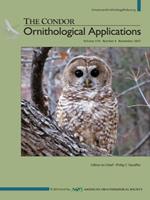Hybridization between species that do not normally interbreed has increased due to human impacts on natural environments, such as habitat alteration or introductions of nonnative species. In particular, the introduction of Mallards (Anas platyrhynchos) globally has led to hybridization with many duck species. In the southeastern United States, hybridization with Mallards is a potential threat to the genetic identity of Mottled Ducks (A. fulvigula), a nonmigratory, coastal duck species. Hybridization between Mallards and Mottled Ducks has been examined in South Carolina and Florida, but not extensively in the remaining part of the Mottled Duck range. Mottled Ducks introduced into South Carolina show considerable admixture with Mallards, whereas in Florida, the hybridization rate between Mallards and Mottled Ducks is ∼9%. Given these results, hybridization in the western Gulf Coast region is of potential concern and should be examined to determine the potential impact on the Mottled Duck lineage. In this study, we examined hybridization in the western Gulf Coast region using 36 microsatellite loci and 405 ducks consisting of putative Mottled Ducks (n = 319), Mallards (n = 76), and hybrids (n = 10). Overall, genetic analyses revealed levels of hybridization of ∼5–8%, with more individuals genetically assigned as hybrids from birds putatively identified as Mallards (5/76 and 14/76 in STRUCTURE and INSTRUCT, respectively) than as Mottled Ducks (14/319 in both programs). These data suggest that hybridization rates in the western Gulf Coast region are lower than those in Florida. However, projected coastal marsh loss in Texas and Louisiana may drive Mottled Ducks into urban wetland areas, an outcome that may increase contact between Mottled Ducks and Mallards and could result in similar levels of hybridization to those observed in Florida, where Mottled Ducks occupy urban and suburban habitats. Regular monitoring will help to determine future trends in levels of hybridization.
How to translate text using browser tools
6 September 2017
Hybridization between Mottled Ducks (Anas fulvigula maculosa) and Mallards (A. platyrhynchos) in the western Gulf Coast region
Robert J. Ford,
Will Selman,
Sabrina S. Taylor
ACCESS THE FULL ARTICLE

The Condor
Vol. 119 • No. 4
November 2017
Vol. 119 • No. 4
November 2017
Anas fulvigula maculosa
conservation genetics
hybridization
mallard
mottled duck
waterfowl
western Gulf Coast




